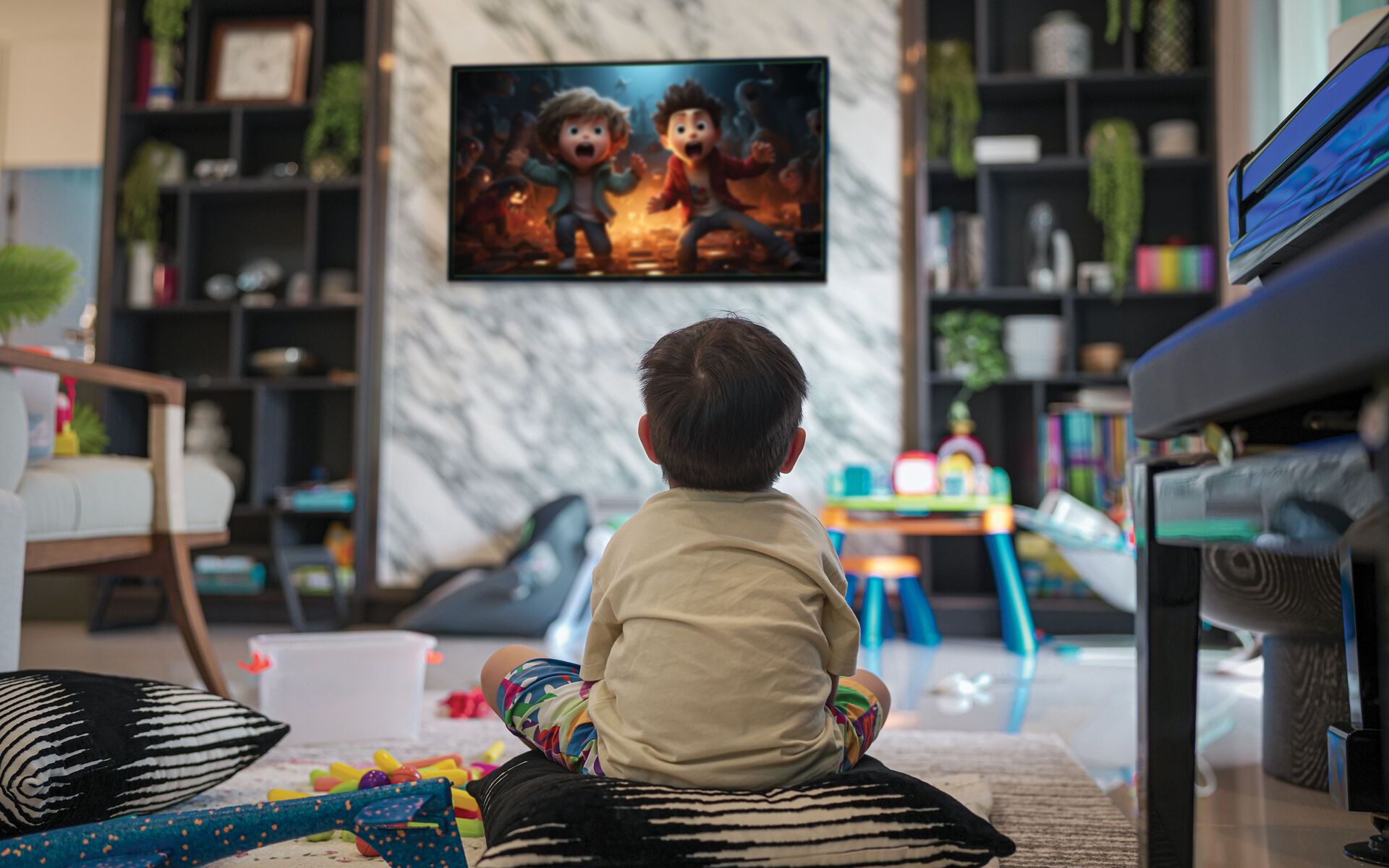One Child at a Time: Ensuring a Peaceful Future

In This Article
-
Even when children are not actively involved in conflicts, there is the possibility that they might, due to violent influences during their developmental years, be pre-disposed to conflict.
-
The area of subliminal influences is one of interest to researchers, especially with regards to advertising, and has prompted debates over the years as to whether subliminal perceptions or persuasions exist or work.
-
Children with deliberately devised peace education would be armed to think critically, identify positive role models, and manage conflict without resorting to violence.
The constant threat to children by conflict and violence globally has led to the formulation of policies and rules to govern and protect children from unnecessary, deliberate, and direct exposure to violence and conflict. Children are beings of social construct, shaped by the environment they find themselves in. They are molded, and their minds instructed, by everyday realities which, during contemporary times, are frighteningly violent. Children, formerly regarded as symbols of peace and innocence, are now often seen as weapons for war and illustrations for conflict. This shift leads to skepticism over the future of sustainable peace. Even when children are not actively involved in conflicts, there is the possibility that they might, due to violent influences during their developmental years, be pre-disposed to conflict. It is with this possibility that this article concerns itself.
Subliminal influences or messages are the ones that affect our minds without us being aware of it. Studies abound on both sides of the spectrum as to whether subliminal influences or messages actually work and to what extent they are effective at affecting behavior or personal development. This is an attempt at exploring the concept of subliminal influences as pertains to conflict and violence in relation to children. It then highlights the peace building potentials of children and the importance thereof, with the possibility of harnessing the potentials of the children maximally, for sustainable peace.
Subliminal Influences
The term subliminal is derived from the Latin words sub (below) and limen (threshold). The threshold, in this case, is the threshold of conscious awareness; the level at which things can be perceived or understood through the senses. Therefore, a subliminal influence could be defined as something that affects the way a person responds to certain stimulus. This “something,” though it operates below our conscious “threshold,” might lead us to act, think, or feel a certain way or affect our mind without our being aware of its effects.
The area of subliminal influences is one of interest to researchers, especially with regards to advertising, and has prompted debates over the years as to whether subliminal perceptions or persuasions exist or work. A 1985 study to assess the effectiveness of subliminal influences in advertising and popular music concluded that they were not effective. Studies, such as that conducted by Theus, K. T. (1994), concluded that subliminal messages actually do affect people. Interestingly, studies that were based upon visual stimuli tended to agree more that there was an effect than those based on audio stimuli (music in particular). It was also suggested that children are more susceptible to being affected by subliminal influences than adults.
This paper aligns with the school of thought that believes that subliminal messaging exists and can significantly influence human motivation and behavior. The theory is that people can be emotionally and behaviorally affected by visual or vocal stimuli whose presence they do not report. The question then is, how does this theory affect children in particular?
Subliminal Influences in children
“The subliminal aspects of everything that happens to us may seem to play very little part in our daily lives. But they are the almost invisible roots of our conscious thoughts.” (Carl Jung)
From 0 to 15 years old, children are reported to be of an impressionable age—an age where they learn or unlearn, as the case may be, behaviors and values that shape who they will turn out to be as adults. For researchers such as Massey (1965), as put forward by Herron, R. (2010),
this is also called the “imprint period.” Between ages 0 and 7, the mind is like a sponge and unconsciously absorbs everything around it with no conscious filters. Between 7 and 14, children develop “heroes.” That is, other adults they look up to apart from their parents, and they consciously begin to emulate or model themselves after their heroes. Thus, Herron is saying that children are very impressionable at the ages identified above. He states that many behaviors are learned behaviors through body language.
It is important to note at this point that it has been suggested—and understandably so—that children are less able to identify subliminal messages for what they are. Ironically, this fact also means that they can be more effectively affected by them. Recently, the World Health Organization (WHO) suggested that children in Europe are bombarded with subliminal digital messages regarding (and almost glamorizing) unhealthy foods. These messages often appear seemingly unnoticeable on screens when children play video games or watch television. A 2004 study asserted that “…too many children are watching too much television and the shows that they are watching (even if they are cartoons) have become violent and addictive.” It further asserted that while the violence in cartoons seems downplayed mainly because the characters are not real, some of the scenes may subliminally cause long term damage as the children might start to see the use of violence as acceptable (Choma, S. G et al). Given that this study was conducted in 2004, two decades since then it has become even more challenging for children to know any better for it is not only TV they are exposed to such subliminal messages.
Through the media, body language, and everyday reality, the minds of youth are inundated with imagery of violence, conflict, and war. They are subliminally exposed to fighting, suffering, and death. This is not to say these activities are unreal, but the problem is the fact that continuous exposure to this kind of imagery leaves children desensitized and unsympathetic to these realities.
Television shows of pain and suffering are often some of the most watched. This is worrisome, as many youth might begin to believe that violence is a normal way of addressing conflict, and that pain and hurt can be funny. They may begin to develop the notion that conflict is funny, and, unless it happens to them, it is none of their business. Often, this happens through subliminal influence.
Children as Potential Peace Builders
It goes without saying that children are potential peace builders. Indeed, if one were to accept the notion that they are not, what future could we have? Children are not merely hapless victims of conflict. To begin with, if children do not begin to participate in peace building, their needs will be ignored during any peace building exercise. Also, children that lack any form of peace education, may eventually become obstacles to sustainable peace.
Children with deliberately devised peace education would be armed to think critically, identify positive role models, and manage conflict without resorting to violence. Children are often found to be resilient. They devise ways of staying safe during conflict. It is important that these children are involved in discussions about peace building. Children may raise awareness for peace; promote social values necessary for peace; and mend bridges and repair damaged social relationships. They can do this by:
- Organizing youth meetings where they can share about how to live together and survive;
- Preparing advocacy material on children’s rights and peace;
- Promoting conflict transformation and dialogue as well as supporting peer advice, counselling, education, and support;
- Encouraging all children to get an education including those that might have been actively involved in conflict;
- Speaking against discrimination, violence, corruption, and other vices in both school settings and within the community; and
- Promoting youth participation in school and local governance.
Although children have actively participated in peace building with some levels of success in Uganda, Nepal, Guatemala, and Bosnia-Herzegovina, there is still a lot to be done. Their successes are limited by factors such as societal perceptions of the role of a child; prejudices, which they often “learn” from people of influence; discrimination on the basis of class, gender, etc.; and education. Many of these factors could be affected by subliminal influences.
Subliminal Influences and the Capacity of Children as Peace Builders
Values and beliefs are the core of our thoughts and behaviors. They form the driving force behind what we do, and why we do them. The older generation is therefore obligated to impart the right values, including the ethics of “humanism, tolerance, diversity, democracy and critical thinking,” to the next and much younger generation (Degesys, 2008).
Because most behaviors are learned, they can equally be unlearned and replaced with behaviors associated with non-violence and peace building. Degesys remarks that as education systems can sustain conflict within schools, they can also liberate it. Just as racism, sexism and xenophobia (concepts that are sometimes more primordial in nature than we think), can be subliminally learned through certain curriculums, the same power structures can be unlearned and replaced through transformative learning, which encourages students to engage and participate (in peace building) as conscientious citizens using transformative methods necessary to change their attitudes towards conflict.
The family (immediate and extended) is the first circle of influence and needs to begin to understand how to better train children to deal with current issues—and especially conflict. Parenting styles need to be adjusted to accommodate changes in our present reality. Children’s mindsets need to be re-engineered. Just as the mind might have been “poisoned with violence” through subliminal messaging and influence, it can be reconstructed and reshaped toward peacebuilding. Children need to learn how to handle their emotions and learn social arts and graces as well as personal responsibility.
Schools and other educational institutions form the second circle of influence. It is imperative for an increase in peace education resources targeting the 0-13 age bracket in schools. The younger youth receive a peace education, the better, because what they learn at this stage will be very difficult to unlearn as they grow. Therefore, they should be taught the positives rather than have them absorb the negatives. Just as people are taught to walk, they can be taught to be peacemakers and peace builders. Most of the education children get today is targeted at incidents that occur after conflict—that is, post conflict education. We need to teach them how to avoid conflict.
Conclusion and Recommendations
The concept of peace building is wider than the idea of state building and reconstruction. It is a core component of the conflict resolution process. Because it is part of a process, we take it for granted that it should be the first stage of the process and not the last. Peaceful habits and education need to be mainstreamed into our minds and our lives—and especially into children’s development from as early an age as possible. Peace education needs to be part of the educational curricula at every level, not just secondary and above. Nursery and primary schools need to adopt peace education, too. Teaching peace building is everybody’s business.
Specifically, in terms of subliminal influences, there is need for parents, and indeed the authorities, to pay attention to the content in children shows and other children-targeted media. As mentioned above, subliminal messages are sometimes tucked away innocently within seemingly harmless content. If children are continuously exposed to such content, it will have dangerous consequences for global peace and security.
There is also the need to thoroughly screen school curricula to flag any content that has the potential to subliminally influence children to respond with violence, prejudice, or other negative stimuli. More importantly, teachers should be trained on how to ensure that they do not project any personal biases or prejudice unto the children in their care.
References
- Anyadike, Z. and Ikelionwu, N. (2019) Nigeria’s Peace Initiatives: Chapter 13: Subliminal Influence and Nigerian Children: Implications for Sustainable Peace. 2019.
- Bornstein, R. F. (1989). “Subliminal Techniques as Propaganda Tools: Review and Critique. Journal of Mind & Behaviour, Vol. 10(3), 231-262.
- Degesys, A. (2008) Transformative pedagogy in conflict resolution as an alternative route to peacebuilding – roads less explored, in T. Woodhouse, ed., Peacebuilding and Security in the 21st Evanston, II: Rotary Centers for International Studies.
- Egermann, H. et. al (2006). “Is There an Effect of Subliminal Messages in Music on Choice Behaviour?” Journal of Articles in Support of Null Hypothesis, Vol.4(2)
- Fiernstein, C., et al (2010): Children participation in armed conflict and post-conflict peacebuilding in B. Percy-Smith and N. Thomas (2010): A handbook of children and young people’s participation perspectives from theory and practice. Oxford: Routledge.
- Herron, R. (2010). “Proactive Parenting: Through Conscious Communication.” Xlibris Publishing Company.
- Kaplan, E. (2005) “Child Soldiers Around the World” Council on Foreign Relations. Available at www.cfr.org/backgrounder/child-soldiers-around-world. Assessed May 14 2019.
- Ramsbotham, O., Woodhouse, T., Miall, H. (2011): Contemporary Conflict Resolution – The prevention, management and transformation of deadly conflicts.
- Theus, K. T. (1994). “Subliminal Advertising and the Psychology of Processing Unconscious Stimuli: A Review of Research.” Psychology & Marketing, Vol.11 (3), 271-290;
- UNICEF: https://www.unicef-irc.org/article/1059-from-victims-to-peacebuilders-children-and-youth-in-the-digital-age.html
- study.com – Subliminal Influence: Definition and Overview.
- visualmeditation.com – Subliminal Messages: How They Work and How They Affect Us.
- psychologytoday.com – Hidden Persuaders: The Psychology of Subliminal Perception.
- https://www,unicef-irc.org/article/1059: From victims to peacebuilders. The 1990 African Charter on the Rights and Welfare of the Child. 2000. Optional Protocol to the Convention on the Rights of the Child on the Involvement of Children in Armed Conflict Security Council Resolution 1460.









